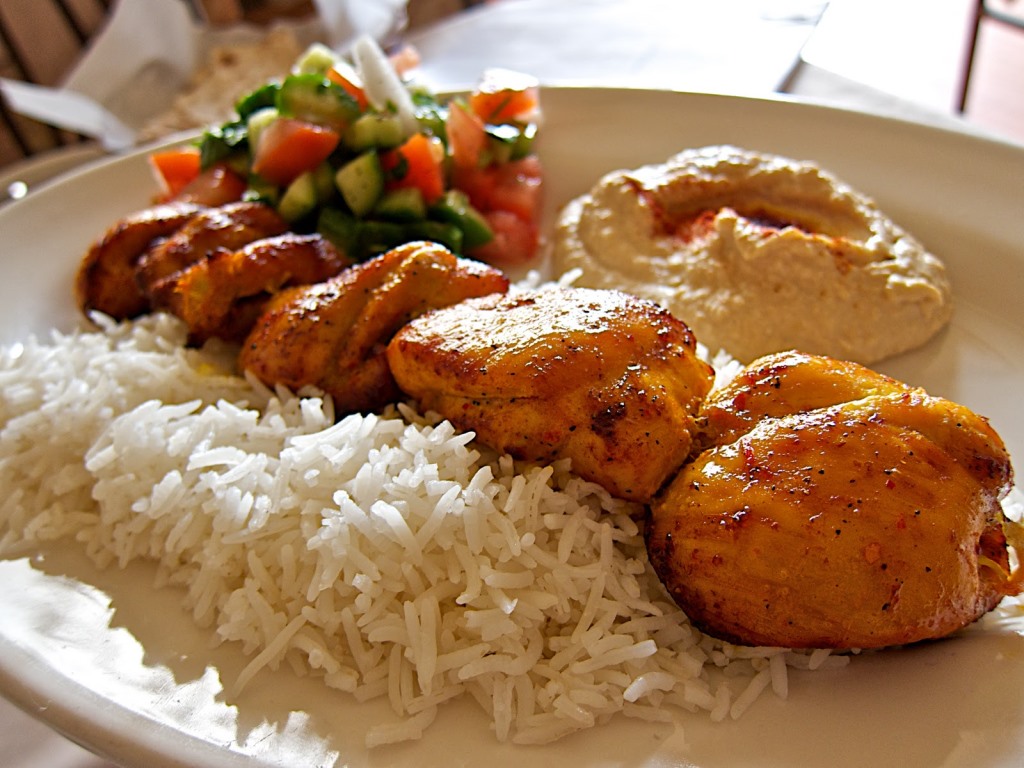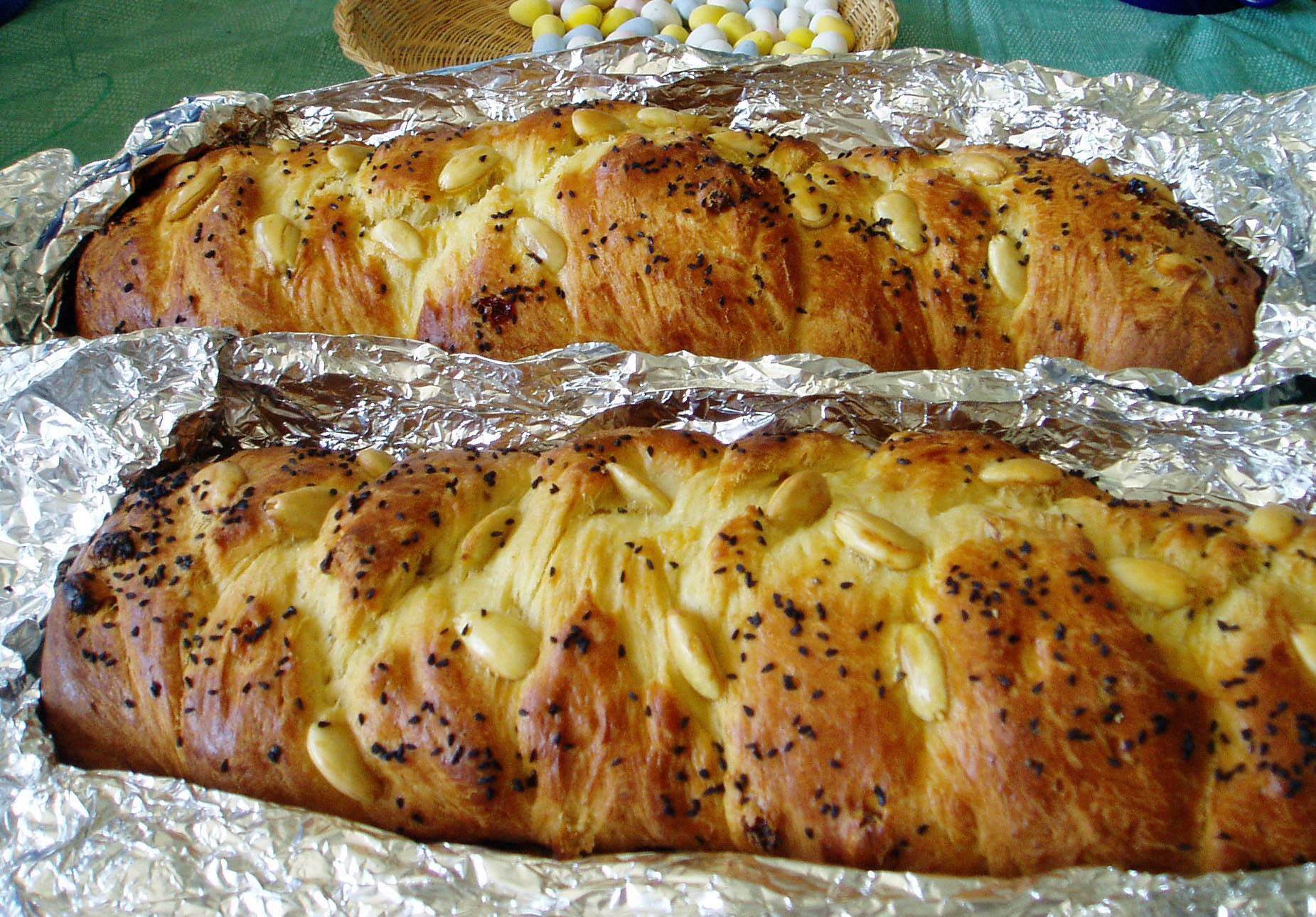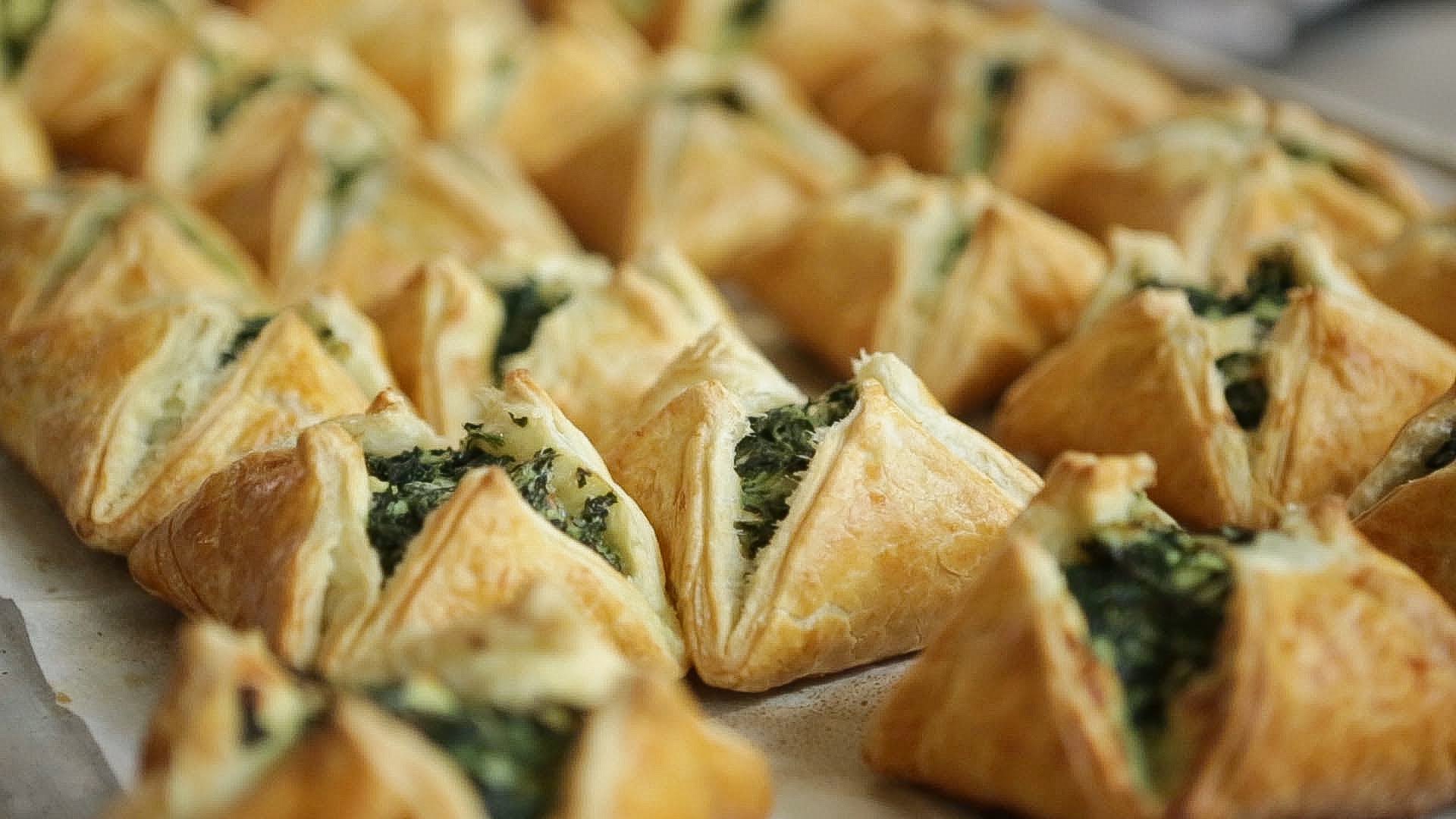Return
Gastronomy » Art, Culture and Tradition
|
Ref ID: 1AL2016/405 | Posted On: 20-09-2016 | Updated on: 20-09-2016
|
|
Armenian cuisine
The preparation of meat, fish, and vegetable dishes in an Armenian kitchen requires stuffing, frothing, and pureeing. Lamb, eggplant, and bread (lavash) are basic features of Armenian cuisine. Armenians use cracked wheat (bulgur) in preference to the maize and rice popular among their Caucasian neighbors (Georgia).
History
Armenian cuisine belongs to the family of Caucasian cuisines, and has strong ties with Turkish cuisine, Georgian cuisine, Persian cuisine, and Levantine cuisine. Historically, there have been mutual influences with all of the above-listed cuisines, though the exact nature of the influences is nebulous due to the dearth of research, political and nationalistic tensions, and the close co-habitation of the Armenian, Turkish, and Iranian people during the past seven centuries. In addition, the Armenian Genocide of 1915, with the ensuing large-scale transplantation of the survivors to the West, has further muddied the evidence.
Nevertheless, certain qualities may generally be taken to characterize Armenian cuisine:
- The flavor of the food relies on the quality and freshness of the ingredients rather than on excessive use of spices.
- Fresh herbs are used extensively, both in the food and as accompaniments. Dried herbs are used in the winter, when fresh herbs are not available.
- Wheat is the primary grain and is found in a variety of forms, such as: whole wheat, shelled wheat, bulgur (parboiled cracked wheat), semolina, farina, and flour. Historically, rice was used mostly in the cities (especially in areas with a large Turkish population) and in certain rice-growing areas (e.g., Marash and the region around Yerevan).
- Legumes are used liberally, especially chick peas, lentils, white beans, and kidney beans.
- Nuts are used both for texture and to add nutrition to Lenten dishes. Of primary usage are walnuts, almonds, pine nuts, but also hazelnuts, pistachios (in Cilicia), and nuts from regional trees.
- Fresh and dried fruit are used both as main ingredients and as sour agents. As main ingredients, the following fruit are used: apricots (fresh and dried), quince, melons, and others. As sour agents, the following fruits are used: sumac berries (in dried, powdered form), sour grapes, plums (either sour or dried), pomegranate, apricots, cherries (especially sour cherries), and lemons.
- In addition to grape leaves, cabbage leaves, chard, beet leaves, radish leaves, strawberry leaves, and others are also stuffed.
Typical dishes

Armenian kibbeh with cucumber/yoghurt soup
There are two de facto national dishes in Armenian cuisine.
- Harissa is a porridge made of wheat and meat cooked together for a long time, originally in the tonir but nowadays over a stove. Harissa is related to the Turkish keshkeg, the Indo-Pakistani haleem, and several similar dishes. Traditionally, harissa was prepared on feast days in communal pots and served to all comers. The wheat used in harissa is typically shelled (pelted) wheat, though in Adana, harissa is made with կորկոտ (korkot; ground, par-boiled shelled wheat), similar to bulgur. Either lamb, beef, or chicken is used as the harissa meat.
- Khash, which started off as a laborer's meal, consists of beef or lamb feet that have been slow-cooked overnight in water. It is eaten at breakfast over crumbled dried lavash bread, with crushed garlic and liberal portions of vodka or spirits. Khash is typically eaten in winter. Variations of khash from the Van region supplement the beef feet with various organ meats, such as heart, tongue, etc., as well as chick peas or other legumes. A vegetarian version of khash replaces the meat with lentils. This version is also served over crumbled dry lavash but is topped with fried onions.
The "everyday" Armenian dish is the dzhash (Ճաշ). This is a brothy stew consisting of meat (or a legume, in the meatless version), a vegetable, and spices. The dzhash was typically cooked in the tonir. The dzhash is generally served over a pilaf of rice or bulgur, sometimes accompanied by bread, pickles or fresh vegetables or herbs. A specific variety of dzhash is the porani (պորանի), a stew made with yoghurt, of possibly Persian origin. Examples of dzhash are:
- Meat and green beans or green peas (with tomato sauce, garlic, and mint or fresh dill)
- Meat and summer squash (or zucchini). This is a signature dish from Ainteb, and is characterized by the liberal use of dried mint, tomatoes, and lemon juice.
- Meat and pumpkin. This is a wedding dish from Marash made with meat, chick peas, pumpkin, tomato and pepper paste, and spices.
- Meat and leeks in a yoghurt sauce.
- Urfa-style porani, made with small meatballs, chickpeas, chard, and desert truffles.
Grilled meats (kabobs) are quite common as well and are omnipresent at market stalls, where they are eaten as fast food, as well as at barbecues and picnic. Also, in modern times, no Armenian banquet is considered complete without an entree of kabob. Kabobs vary from the simple (marinated meat on a skewer interspersed with vegetables) to the more elaborate. Certain regions in Western Armenia developed their local, specialized kabobs. For example, we have
- Urfa kabob, spiced ground meat interspersed with eggplant slices.
- Orukh and khanum budu, two Cilician specialties in which lean ground meat is kneaded with dough and spices and lined on a skewer.
Stuffed dishes are usually served on festive occasions, as they take quite a bit of time to prepare. Almost any vegetable or cut of meat is a candidate for stuffing. Examples are:
- Grape leaves, cabbage leaves, chard leaves, beet greens, strawberry leaves, or other edible large leaves
- Tomatoes, peppers, squash/zucchini, eggplants, pumpkins, onions, potatoes
- Melons, apples, quince, apricots, dates
- Chicken legs
- Lamb breast (or rack of lamb), lamb intestines (մումպար), lamb or beef lungs
Typically, the stuffing consists of rice or bulgur, mixed with ground meat, seasonings, and sometimes dried fruits and nuts. Vegetarian stuffings follow the same pattern but replace the meat with a variety of pulses and legumes.
A common dish of Armenian cuisine is pilaf. Pilaf is a seasoned rice dish and often served with meats such as lamb or beef. Variants today include noodles with the desired meat.
Spices and herbs
Armenian cuisine uses spices sparingly but instead relies on the use of fresh herbs.
The primary spices used in Armenian cuisine are: Salt, Garlic, Red pepper (particularly Aleppo pepper, which is a spicier variety of paprika), Dried mint (in Western Armenia), Cumin, Coriander, Sumac (the powdered dried berry of the Mediterranean sumac bush), Cinnamon, Cloves, Mahleb (the powdered pit of the black cherry).
The types of herbs used in cuisine are very strongly influenced by region. In Eastern Armenia, the following fresh herbs are used liberally: Dill, Parsley, Tarragon, Basil, Oregano (particularly wild oregano), Thyme.
In west part of Armenia, the preferred herbs are: Mint, Parsley, Basil, Tarragon, Thyme, Savory.
Throughout the country, local herbs are used as well. Many of the herbs that Western Armenians have used have fallen out of use because of lack of availability. In the Republic of Armenia, and particularly in Artsakh (Nagorno-Karabagh), aveluk (Rumex crispus), chrchrok (a water grass similar to water cress), and other herbs are all used.
In addition to the above, various scents and attars commonly used in the Middle-East are also used in the making of sweets; for example, rose water and orange blossom water.
External influences
Like all cuisines, Armenian cuisine was influenced by the cuisine of its neighbors, as well as by the availability of "exotic" ingredients.
The introduction into Cilicia and Aleppo, in the late 18th Century, of tomato[citation needed] revolutionized the Armenian cuisine of Cilicia. Dishes that used to be prepared with dried fruits started being prepared with tomato. The spread of tomato into the region can be quite clearly traced: essential in the cuisine of Cilicia and many large cities, it is rarely used in the cuisine of Van and Vaspurakan. Other important imports are peppers and potatoes. The latter, according to tradition, was imported into Armenia from India by an Armenian Catholicos in the 18th Century. Other imports include spices, such as cinnamon and nutmeg.
More problematic is the understanding of the influence of other cuisines on Armenian cuisine. Specifically, the influences between Turkish (Ottoman) and Armenian cuisines requires more research. Because Armenians and Turks lived in close proximity for 600 years, the influences must have been many. However, due to a general unavailability of sources, the destruction of many manuscripts during the Armenian Genocide, and the present-day unwillingness of many Turkish scholars to acknowledge any contributions by Armenians to Turkish history and culture, the matter remains unresolved. In addition, because of Ottoman laws forbidding Armenians from speaking Armenian, many Western Armenian dishes bear Turkish names (e.g., gharnuh yarukh, khanum budu, chi keufteh, etc.).
Being located in a predominantly Muslim region affected Armenian cuisine in other ways as well. In Western Armenian cuisine, pork is almost never used for cooking.
Breakfast
The modern Armenian breakfast consists of coffee or tea, plus a spread of cheeses, jams, jellies, eggs, and breads. Armenians living in the Diaspora often adopt local customs. Thus, Armenians in Lebanon may include "fool" (stewed fava beans in olive oil).
Traditional Armenian breakfast dishes were hearty. They included:
- Khash (which is still eaten on cold winter mornings in the Republic of Armenia)
- Kalagyosh There are many variants of this dish. It can be a meat and yogurt stew or it can be a vegetarian stew made with lentils, fried onions, and matzoon. In either case, it was traditionally eaten by crumbling stale lavash bread over it and eating it with a spoon.
Appetizers
Meals in Armenia often start with a spread of appetizers served for "the table".[2]
- Various cheeses, such as Chechil (tel panir) – braided and pickled string cheese, similar to Georgian sulguni, also chanakh, lori, yeghegnadzor and others made from sheep or cow's milk.
- Topik or topig is a large vegetarian stuffed "meatball".
- Countless stuffed vegetables, usually vegetarian.
- Pickles: cabbage, cucumber, tomatoes (ripe and unripe), cauliflower, carrots, grapes, garlic, etc.
- Fresh herbs
- Grain and herb salads
- Bread dough or phyllo dough pastries called byoreks (boereg). These are either baked or fried.
Bread is "de rigueur", particularly flat breads such as lavash.
Salads
Some Armenian salads combine a grain or legume with tomato, onions, fresh herbs. Mayonnaise is used in Western or Russian-inspired salads (e.g., Salade Olivier). Examples of Armenian salads include
- Eetch – cracked wheat salad, similar to the Middle Eastern tabouleh.
- Lentil salad – brown lentils, tomatoes, onions, in a dressing of lemon juice, olive oil, and chopped parsley. This salad has many variations, with the lentils being replaced by chick peas, black-eyed peas, chopped raw or roasted eggplant, etc.
- Jajukh – there are several varieties of this salad, which resembles a dip or cold soup. The cucumber jajukh is made with diced cucumbers in a matzoon/garlic sauce. The Swiss chard version is made with blanched, chopped chard in a thick "sauce" of drained matzoon and garlic. This salad is traditionally served on Easter Eve. The Lenten version of this (called "ajem jajukh") substitutes tahini, lemon juice, and a little tomato sauce for the drained yogurt.
Byorek
- Byoreks (Armenian: բյորեկ), are pies made with phyllo pastry and stuffed with cheese (panirov byorek, from Armenian: panir for cheese, Eastern Armenians refer to this as Khachapuri) or spinach (similar to spanakopita in Greek cuisine). They are a popular snack and fast food, often served as appetizer. Su byorek lit. 'water burek' (from Turkish word Su Böreği) is a lasagna-style dish with sheets of phyllo pastry briefly boiled in a large pan before being spread with fillings.[3] Msov byorek is a bread roll (not phyllo pastry) stuffed with ground meat (similar to Russian pirozhki).
- Semsek, from the region of Urfa, is a fried open-faced meat byorek.
- A specific Lenten byorek is made with spinach and tahini sauce.
Grilled meats
Grilling (barbecue) is very popular in Armenia, and grilled meats are often the main course in restaurants and at family gatherings. Grilled meat is also a fast food.
- Khorovats (or khorovadz) (Armenian: խորոված xorovaç) – the Armenian word for barbecued or grilled meats (the generic kebab in English), the most representative dish of Armenian cuisine enjoyed in restaurants, family gatherings, and as fast food. A typical khorovats is chunks of meat grilled on a skewer (shashlik), although steaks or chops grilled without skewers may be also included. In Armenia itself, khorovats is often made with the bone still in the meat (as lamb or pork chops). Western Armenians outside Armenia generally cook the meat with bones taken out and call it by the Turkish name shish kebab. On the other hand, the word kebab in Armenia refers to uncased sausage-shaped patties from ground meat grilled on a skewer (called losh kebab or lule kebab by diasporan Armenians and Turks). In Armenia today, the most popular meat for khorovats (including losh kebab) is pork due to Soviet-era economic heritage. Armenians outside Armenia usually prefer lamb or beef depending on their background, and chicken is also popular.
- Gharsi khorovats (Armenian: Ղարսի խորոված) – slivers of grilled meat rolled up in lavash, similar to the Middle Eastern shawarma and the Turkish doner kebab; this "shashlik Ghars style" takes its name from the city of Kars (Armenian: Ghars) in eastern Turkey, close to the Armenian border.
Soups
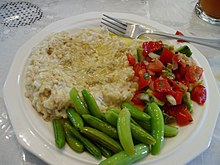
Harissa served with vegetables

Manti with sour cream: an
essential component of mantapour
Armenian soups include spas, made from matzoon, hulled wheat and herbs (usually cilantro),[4] and aveluk, made from lentils, walnuts, and wild mountain sorrel (which gives the soup its name). Kiufta soup is made with large balls of strained boiled meat (kiufta) and greens.
Another soup, khash, is considered an Armenian institution. Songs and poems have been written about this one dish, which is made from cow's feet and herbs made into a clear broth. Tradition holds that khash can only be cooked by men, who spend the entire night cooking, and can be eaten only in the early morning in the dead of winter, where it served with heaps of fresh garlic and dried lavash.
T'ghit[citation needed] is a very special and old traditional food, made from t'tu lavash (fruit leather, thin roll-up sheets of sour plum purée),[5] which are cut into small pieces and boiled in water. Fried onions are added and the mixture is cooked into a purée. Pieces of lavash bread are placed on top of the mixture, and it is eaten hot with fresh lavash used to scoop up the mixture by hand.
Karshm is a local soup made in the town of Vaik in the Vayots Dzor Province. This is a walnut based soup with red and green beans, chick peas and spices, served garnished with red pepper and fresh garlic.[6] Soups of Russian heritage include borscht, a beet root soup with meat and vegetables (served hot in Armenia, with fresh sour cream) and okroshka, a matzoon or kefir based soup with chopped cucumber, green onion, and garlic.
- Arganak (Armenian: արգանակ arganak) – chicken soup with small meatballs, garnished before serving with beaten egg yolks, lemon juice, and parsley.
- Blghourapour (Armenian: բլղուրապուր blġurapur) – a sweet soup made of hulled wheat cooked in grape juice; served hot or cold.[7]
- Bozbash (Armenian: բոզբաշ bozbaš) – a mutton or lamb soup that exists in several regional varieties with the addition of different vegetables and fruits.[8]
- Brndzapour (Armenian: բրնձապուր brnjapur) – rice and potato soup, garnished with coriander.
- Dzavarapour (Armenian: ձավարապուր javarapur) – hulled wheat, potatoes, tomato purée; egg yolks diluted with water are stirred into the soup before serving.
- Flol – beef soup with coarsely chopped spinach leaves and cherry-sized dumplings (Armenian: flol) made from oatmeal or wheat flour.
- Harissa (Armenian: հարիսա harisa, also known as ճիտապուր) – porridge of coarsely ground wheat with pieces of boned chicken
- Katnapour (Armenian: կաթնապուր kat’napur) – a milk-based rice soup, sweetened with sugar.
- Katnov (Armenian: կաթնով kat’nov) – a milk-based rice soup with cinnamon and sugar.
- Kololak (Armenian: կոլոլակ kololak) – soup cooked from mutton bones with ground mutton dumplings, rice, and fresh tarragon garnish; a beaten egg is stirred into the soup before serving.
- Krchik (Armenian: Քրճիկ kṙčik) – soup made from sauerkraut, pickled cabbage, hulled wheat, potatoes, and tomato purée.
- Mantapour (Armenian: մանթապուր mantʿapur) – beef soup with manti; the manti are typically served with matzoon or sour cream (ttvaser), accompanied by clear soup.
- Matsnaprtosh (Armenian: մածնաբրդոշ matsnaprt'oš) - this is the same as okroshka, referenced earlier, with sour clotted milk diluted with cold water, with less vegetation than okroshka itself. Matsnaprtosh is served cold as a refreshment and supposedly normalizes blood pressure.
- Putuk (Armenian: պուտուկ putuk) – mutton cut into pieces, dried peas, potatoes, leeks, and tomato purée, cooked and served in individual crocks.
- Sarnapour (Armenian: սառնապուր saṙnapur) – pea soup with rice, beets and matzoon.
- Snkapur (Armenian: սնկապուր snkapur) – a mushroom soup.
- Tarkhana (Armenian: թարխանա t’arxana) – flour and matzoon soup
- Vospapour (Armenian: ոսպապուր ospapur) – lentil soup with dried fruits and ground walnuts.
- Pekhapour (mustache soup) – chick peas, shelled wheat (ծեծած), lentils, in a vegetarian broth and fresh tarragon. This soup originates from Aintab.
Fish
- Ishkhan (Armenian: իշխան išxan) – Sevan trout (endangered species), served steamed, grilled on a skewer, or stuffed and baked in the oven
- Sig (Armenian: սիգ sig) – a whitefish from Lake Sevan, native to northern Russian lakes (endangered species in Armenia)
- Karmrakhayt (alabalagh) (Armenian: կարմրախայտ karmrakhayt) – a river trout,[9] also produced in high-altitude artificial lakes (e.g., the Mantash Reservoir in Shirak Province).[10]
- Koghak (Armenian: կողակ koġak) – an indigenous Lake Sevan fish of the carp family, also called Sevan khramulya (overfished)
Main courses
- Fasulya (fassoulia) – a stew made with green beans, lamb and tomato broth or other ingredients
- Ghapama (Armenian: ղափամա ġap’ama) – pumpkin stew
- Kchuch (Armenian: կճուճ kč̣uč̣) – a casserole of mixed vegetables with pieces of meat or fish on top, baked and served in a clay pot
- Tjvjik (Armenian: տժվժիկ tžvžik) – a dish of fried liver and kidneys with onions
Meat products
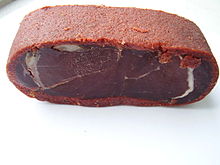
Armenian basturma
- Basturma (Armenian: բաստուրմա basturma) – a highly seasoned, air-dried raw beef, similar to bindenfleisch
- Yershig (Armenian: երշիկ yershik or սուջուխ suǰux) – a spicy beef sausage (called sujuk in Turkey)
- Kiufta (Armenian: քյուֆթա k’yuft’a) – meaning meatball comes in many types, such as Hayastan kiufta, Kharpert kiufta (Porov kiufta), Ishli kiufta, etc.
Dairy products
- Labneh – Strained dense yogurt made from sheep, cow, or goat milk; often served in mezze with olive oil and spices
- Matzoon (Armenian: մածուն matsun)
- Tahn (Armenian: թան t’an) – a sour milk drink prepared by diluting matzoon with cold water, similar to ayran
- Ttvaser (Armenian: թթվասեր t’t’vaser) – sour cream in Armenian; also known by the Russian-derived word smetan (original - smetana)
Bread

Choreg at an Armenian Easter celebration
- Lavash (Armenian: լավաշ lavaš) – the staple bread of Armenian cuisine
- Matnakash (Armenian: մատնաքաշ matnak’aš) – soft and puffy leavened bread, made of wheat flour and shaped into oval or round loaves; the characteristic golden or golden-brown crust is achieved by coating the surface of the loaves with sweetened tea essence before baking.
- Choereg (or choreg) – braided bread formed into rolls or loaves, also a traditional loaf for Easter.[11]
- Zhingyalov hats (Armenian: Ժինգյալով հաց) - Not entirely a bread you would eat with your everyday meal. Zhingyalov hac is an Armenian dish that is made with dough, dried cranberry, pomegranate molasses,that go inside the dough, and 7 different greens which include spinach, coriander, parsley, basil, scallions, dill, mint. There is a variety of combinations that can be used in the bread and these greens can easily be substituted for other greens. The greens are placed in the bread and the bread is folded like a calzone.
Sweets
- Alani (Armenian: ալանի alani) – pitted dried peaches stuffed with ground walnuts and sugar.
- Kadaif (ghataif) – shredded dough with cream, cheese, or chopped walnut filling, soaked with sugar syrup.
- Anoushabour (Armenian: անուշապուր anušapur) – dried fruits stewed with barley, garnished with chopped almonds or walnuts (a traditional Christmas pudding).[12]
- Bastegh or pastegh (Armenian: պաստեղ pasteġ) - homemade fruit leather.
- T'tu lavash (Armenian: թթու լավաշ t’t’u lavaš) – thin roll-up sheets of sour plum purée (fruit leather).
Ritual foods
- Nshkhar (Armenian: նշխար nšxar) – bread used for Holy Communion
- Mas (Armenian: մաս mas) – literally means "piece" a piece of leftover bread from the making of Nshkhar, given to worshippers after church service
- Matagh (Armenian: մատաղ mataġ) – sacrificial meat. can be of any animal such as goat, lamb, or even bird.
Drinks
 J
J
Jermuk is a bottled mineral water
originating from the town of Jermuk
in Armenia, and bottled since 1951
- Armenian coffee (sometimes referred as Turkish) (Armenian: սուրճ) – strong black coffee, finely ground, sometimes sweet
- Kefir (Armenian: կեֆիր) – fermented milk drink
- Kvass (Armenian: կվաս) – sweet, fermented bread drink
- Tahn (Armenian: թան) – yogurt drink (still or carbonated)
- Jermuk (Armenian: Ջերմուկ J̌ermuk) – a brand of mineral water from the Jermuk area
- Hayq, Sari – a brand of bottled mountain spring water from the Jermuk area (in Armenian Hayq stands for Armenia and Sari for from the mountains).
- Tarkhun soda (Armenian: թարխուն t’arxun) – tarragon-flavored soda.
Alcoholic drinks
Beer
Beer (Armenian: գարեջուր gareǰur)
Popular Brands
- Kotayk
- Kilikia
- Erebuni (produced by Kotayk Brewery)
- Gyumri
- Aleksandrapol
Brandy
Armenian brandy (Armenian: կոնյակ konyak), known locally as konyak is perhaps Armenia's most popular exported alcoholic drink. It has a long history of production, even being served at the Yalta Conference.
Popular Brands
Oghi

Armenian wine
Oghi (Armenian: օղի òġi) – an Armenian alcoholic beverage, similar to Turkish "rakı" and its distant cousin from the Balkans "rakiya", usually distilled from fruit;[13] also called aragh.[14] Artsakh is a well-known brand name of Armenian mulberry vodka (tuti oghi) produced in Nagorno-Karabakh from local fruit.[15] In the Armenian Diaspora, where fruit vodka is not distilled, oghi refers to the aniseed-flavored distilled alcoholic drink called arak in the Middle East, raki in Turkey, or ouzo in Greece.[16][17]
- Mulberry vodka (Armenian: թթի արաղ t’t’i araġ) A traditional Armenian vodka made from distilling the mulberry, which is grown all over Armenia, especially in the highlands and Artsakh.
Wine
The alcoholic drink with the longest history in Armenia is wine. One of the oldest wineries in the world was discovered in Armenia. Historically, wineries in Armenia were concentrated along the Ararat valley. Of particular note was the district of Koghtn (Գողթն, current Nakhichevan area). Today, Armenian wineries are concentrated in the Areni region (district of Vayots Dzor).
Armenian wine is mostly made from local varietals, such as Areni, Lalvari, Kakhet, etc., though some wineries mix in better known European varietals such as Chardonnay and Cabernet. Winemaking took a downward plunge in the years following the collapse of the Soviet Union, but is undergoing a revival, with the addition of world-class labels such as Zorah Wines. A yearly wine festival, held in Areni, is popular with the locals and features wines from official wineries as well as homemade hooch of varying quality. Armenian wines are predominantly red and are sweet, semi-sweet (Vernashen, Ijevan), or dry (Areni).
In addition to grapes, wines have been made with other fruit, notably pomegranate (Armenian: նռան գինի nran kini), apricot, quince, etc. In some cases, these fruit wines are fortified.
Click on photo to view full image or click to watch video.





